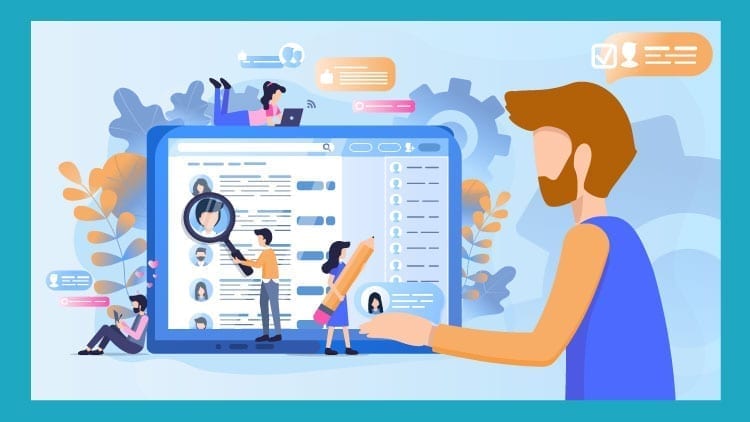How important it is for translators to work with cat tools

Computer-aided translation is a kind of software created to aid the translation process utilizing various tools. Indeed, this sort of toll can support file management, translation memories, glossaries, text review, and quality control. It is essential to recognize that the CAT is not an automated translation, but a tool to facilitate the manual work of the translator.

Following are the reasons why it is important for translators to work with Cat tool:
- Planning
CAT tools can assist you to keep a record of your process, revealing what portion of the translation or proofreading you have created. This can assist you to organize your time for the rest of the project.
- Backup
Corrupted files, computer collisions, random deletions, we all experienced computer problems. Your CAT tool collects every text as you translate, so even if your machine shatters mid-translation, you have a backup. There are several times when we have to use a TM to pre-translate a file after a file get damaged. We suggest that you export your TMs and store them in the cloud, or at least on a USB, keeping them secure should the worst happen.
- Speed
Already translated something related? If you have it in a TM, you can efficiently handle repeated text. CAT tools symbolize if a section is the same as what you have translated before, either in your current document or your translation memory or if there are fuzzy or partial matches where the source text is related. The earlier source text and translation will pop up, and you can include the translation or edit it as needed. This will save you loads of time!
- Consistency
Efficiently managing repetition not only supports you to translate more quickly, but it also improves consistency. Additionally, various CAT tools offer a concordance characteristic which enables you to explore the TM for a word, word sentence or phrase. You can restrict your search to the source text, translation, same matches only, etc.
- Reference Element
Align reference elements to add to your TM to ensure you don’t drop any fuzzy or specific matches that could improve consistency and decrease the time spent translating. SLDX Tutorial Trados 2007’s WinAlign tool can do this, or you can use other tools such as XBench, which is not a CAT tool, but which will enable you to create a TM export from an Excel file including the source content in column A and the translation in column B.
- Formatting
At UTS, we honor when translation deliveries are available to send to the client and don’t need extra Project Management time. Using a CAT tool will assist you to keep the formatting of all kinds of files. Instead of clicking into all the small boxes in a PowerPoint file, or attempting to see all the text stored in the Excel cells, the CAT tool will put everything into the right box, and you will only require to tidy it up.
- Quality Assurance
CAT tool provides a variety of tools for quality check. Spelling, punctuation, grammar, inversion of numbers, and formatting can usually be checked in real time as well as when mentioned by you at the end of a session.

Human and CAT Tools in Translation
Human translators, often professional translators, play a critical role in bridging languages and cultures, even in an era dominated by machine translation and computer-assisted translation tools. These professionals leverage their deep understanding of both the source language and target language, utilizing previous translations and projects as references to enhance accuracy and coherence.
While machine translation offers speed and efficiency for straightforward texts, it lacks the nuanced comprehension of cultural context and idiomatic expressions that human translators bring to the table. For complex translation projects requiring sensitivity to subtleties and cultural nuances, the expertise of a human translator remains indispensable, ensuring that the final product faithfully conveys the intended meaning and resonates with the target audience. Human intervention is crucial in guiding the ethical development and application of artificial intelligence.
Computer-Assisted Translation (CAT) tools have revolutionized the translation workflow, significantly enhancing translation quality within the translation industry. By providing features such as Fuzzy Match, which identifies and suggests alternatives for phrases that are not an exact match but similar to previous translations, these tools streamline the process for both individual translators and translation agencies.
CAT tools are particularly beneficial in producing high-quality translations of technical documents, where precision and consistency are paramount. They support translators by storing and reusing relevant terminology, ensuring that even the most complex projects maintain a high level of accuracy. The benefits of CAT tools extend beyond efficiency and accuracy; they also contribute to the overall improvement of the translation industry by setting new standards for what constitutes a high-quality translation.
Enhancing Accuracy with CAT Tools
Accurate translations are essential in bridging language barriers effectively, and Computer-Assisted Translation (CAT) tools have become a core feature in achieving this with a reduced margin for human error. These tools support a wide range of file formats, allowing translators to work directly with various source files, enhancing both efficiency and precision. Cloud-based CAT tools, in particular, offer the advantage of accessibility and collaboration, enabling translators to access projects from anywhere and share progress in real-time.
This advancement in translation software not only streamlines the translation process but also ensures consistency across documents. By leveraging CAT tools, translators can significantly improve the accuracy of their work, delivering high-quality translations that faithfully convey the intended message of the original text.
Machine translation engines, while offering speed and cost-efficiency, often require the nuanced oversight of human translation to ensure the quality of translations meets professional standards. The integration of translation memory tools significantly enhances translation accuracy and the productivity of translators, especially freelance translators working across diverse language combinations. These tools store previously translated phrases and sentences, allowing for faster processing of source documents without compromising on quality.
Despite the advancements in machine translation, the expertise of human translators remains invaluable, particularly for complex texts where precision and cultural sensitivity are crucial. The balance between machine efficiency and human insight not only optimizes translation costs but also ensures that the final output accurately reflects the intended message of the original documents.
Efficiency in CAT Localization
In software application localization projects, the ability to find “exact matches” between the source and target segments plays a crucial role. By leveraging CAT (Computer-Assisted Translation) software, translators can effectively match these segments, facilitating a more streamlined translation workflow for software programs. This approach not only guarantees uniformity across the application’s localized version but also minimizes the time and resources needed for completion.
CAT tools sift through a database of previously translated segments to swiftly identify exact matches, ensuring that the software’s user interface and instructions remain coherent and user-friendly across various languages. This method is essential for preserving the software application’s functionality and accessibility in the target market.
Check out more resources for translators below:
Frequently Asked Questions
CAT (Computer-Assisted Translation) tools are software applications designed to help translators work more efficiently and accurately. They work by storing translated text segments in a database, known as a translation memory, allowing translators to reuse previous translations for similar or identical phrases, thus speeding up the translation process and ensuring consistency across documents.
No, CAT tools do not automatically translate documents in the way machine translation engines do. Instead, they assist human translators by providing features such as translation memories, terminology databases, and text segmentation, which help in managing and automating parts of the translation process while the translator controls the actual translation work.
CAT tools can handle a wide range of document types and file formats, including but not limited to Word documents, Excel spreadsheets, PowerPoint presentations, HTML files, and various proprietary formats. The specific file types supported can vary between different CAT tools.
While CAT tools offer significant benefits for many translation projects, especially those involving large volumes of text or requiring consistency across documents, they may not be necessary for very small projects or texts that are highly creative and idiomatic, where the nuances of language are best handled directly by human translators without assistance.
CAT tools can help reduce the cost of translation projects over time by increasing the efficiency of translators and reducing the amount of manual work required for each project. By leveraging translation memories and other features, translators can complete projects faster, which can lead to lower costs for repeated or similar texts. However, the initial investment in the software and the time needed to create a substantial translation memory database should also be considered.




